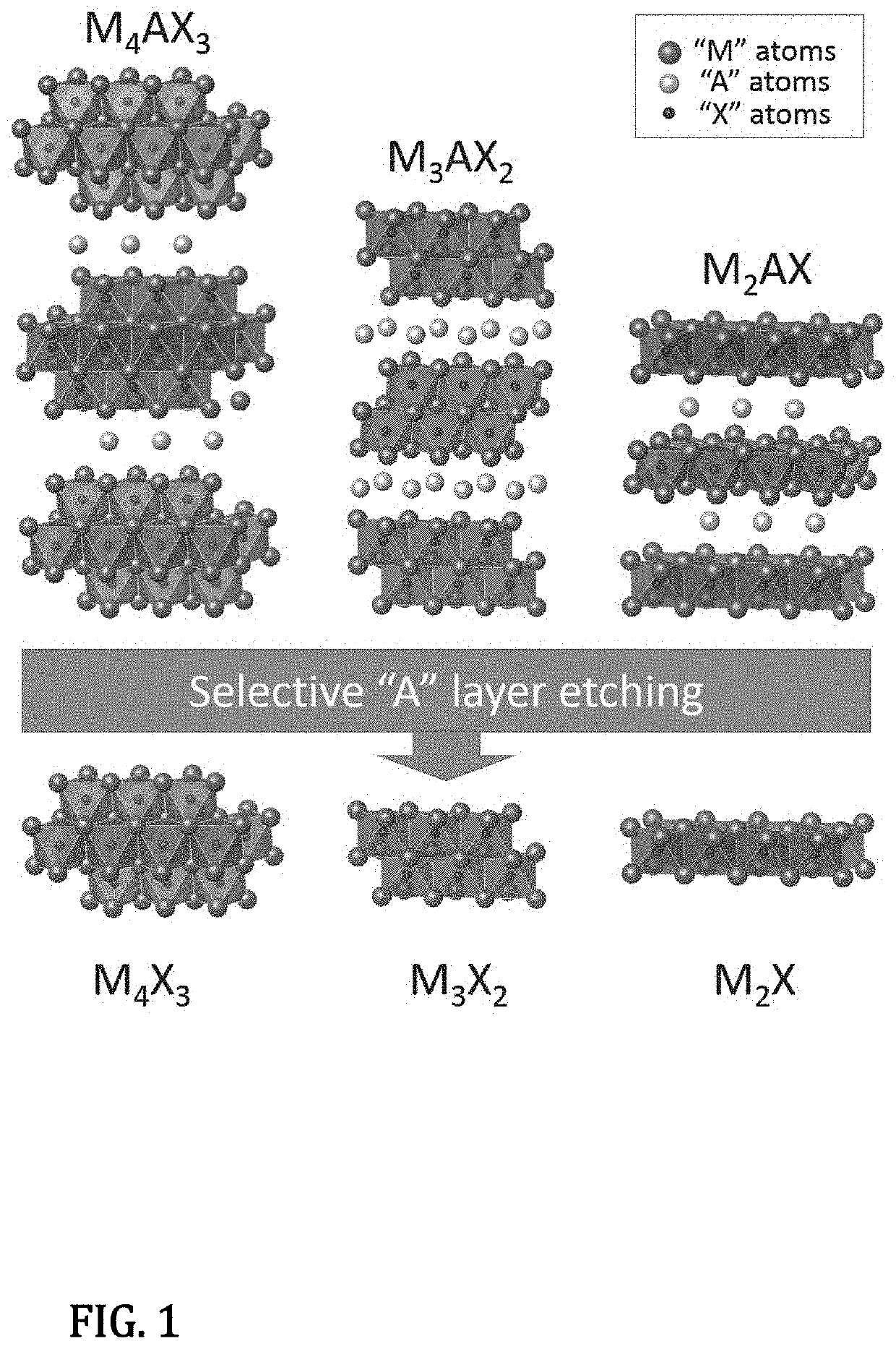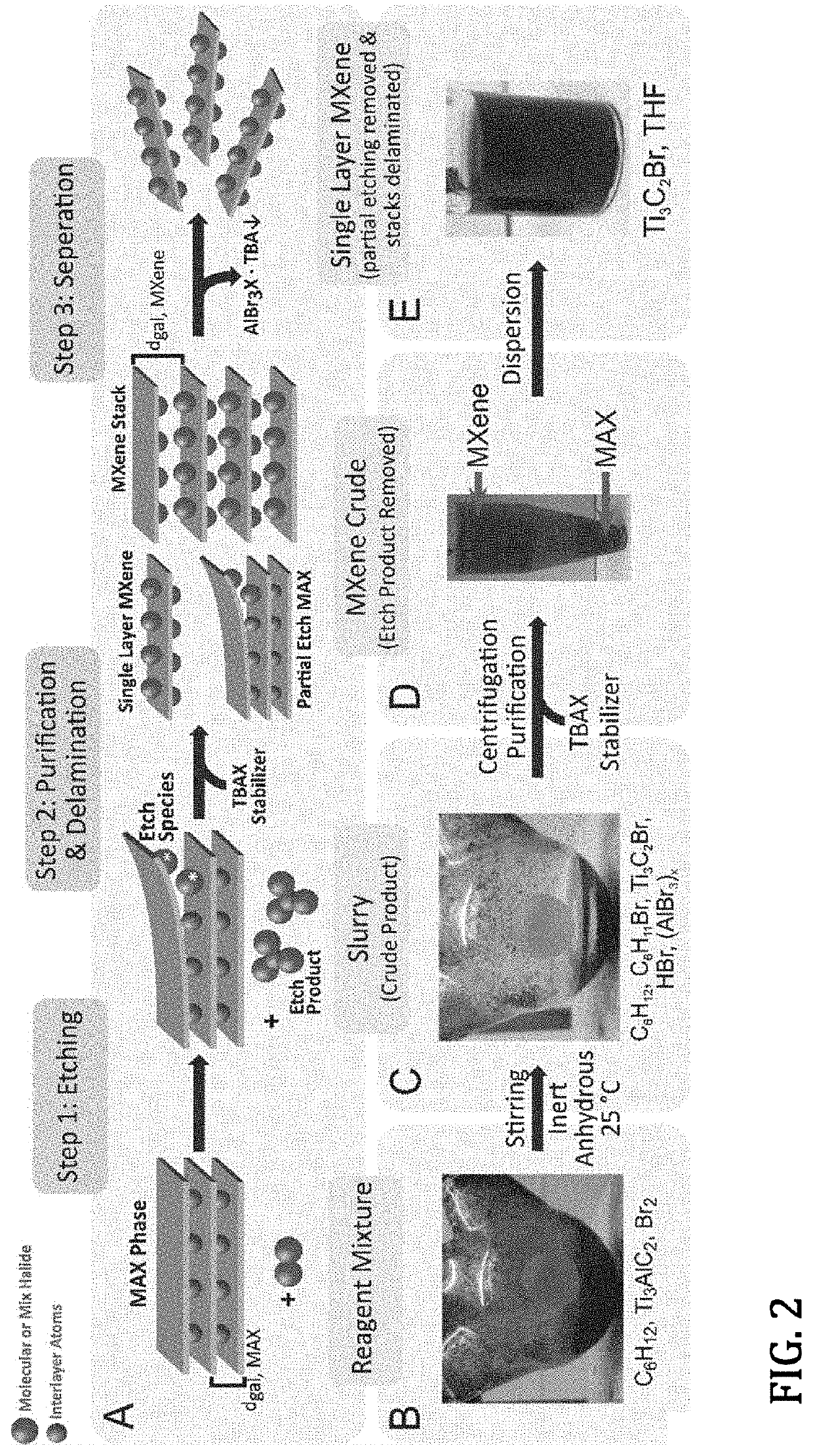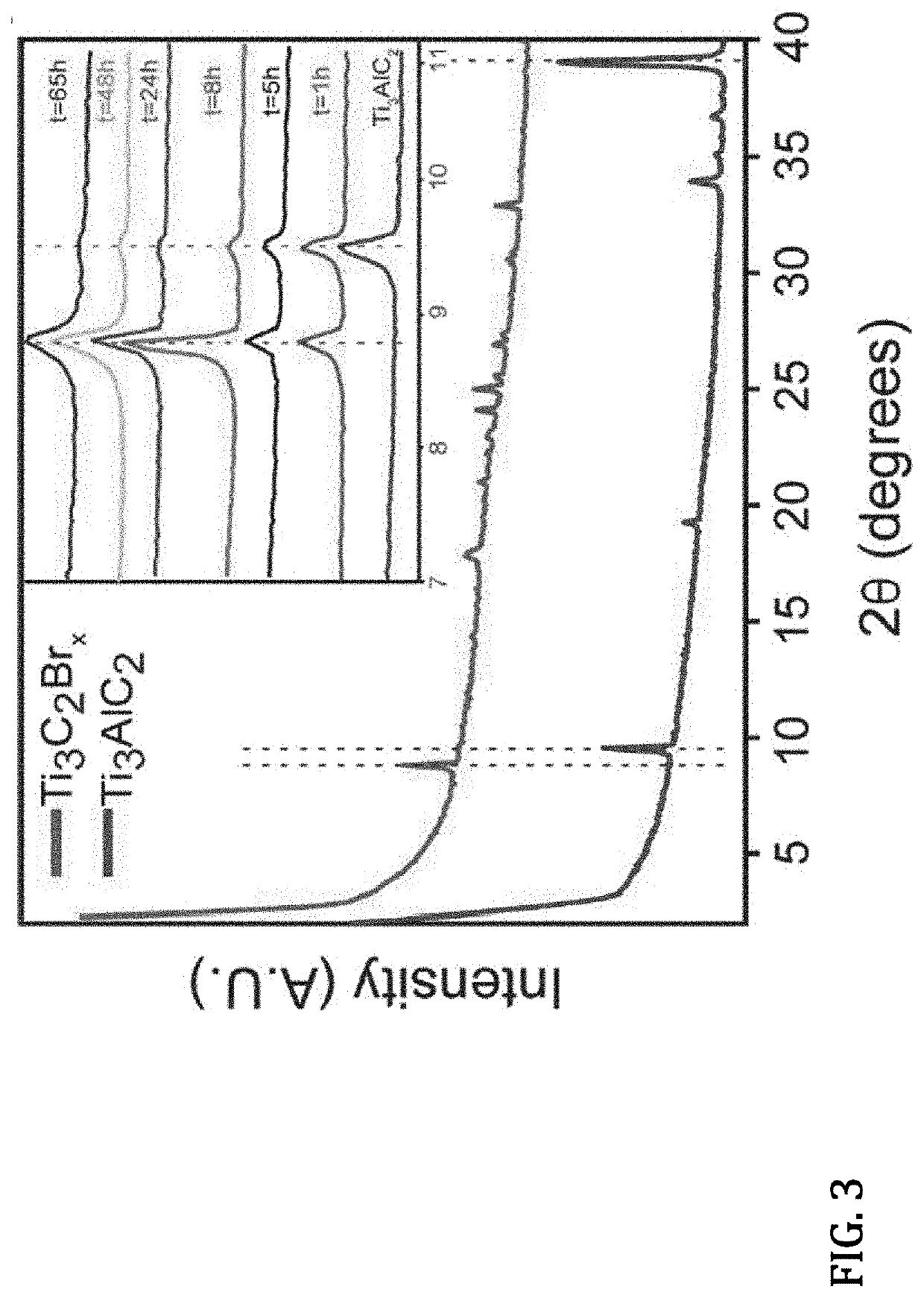Preparation of Layered MXene via Elemental Halogen Etching of MAX Phase
a technology of elemental halogen and etching, which is applied in the field of preparation of layered mxene, to achieve the effects of enhancing coating techniques, facilitating dispersion, and exceptional conductivity
- Summary
- Abstract
- Description
- Claims
- Application Information
AI Technical Summary
Benefits of technology
Problems solved by technology
Method used
Image
Examples
Embodiment Construction
[0059]The unique property suite of two-dimensional MXenes is driving interest in various applications, including energy storage, electromagnetic shielding, and conductive coatings. Conventionally, MXenes are synthesized by wet-chemical etching of the parent MAX-phase in HF-containing media. The acute toxicity of HF hinders scale up, and competing surface hydrolysis challenges control of surface composition and grafting methods. Herein, we present an efficient, room-temperature etching method that utilizes halogens (Br2, I2, ICl, IBr) in anhydrous media to synthesize MXenes from Ti3AlC2. A radical mediated process depends strongly on the molar ratio of the halogen to MAX phase, absolute concentration of the halogen, solvent, and temperature. This etching method provides opportunities in developing new surface chemistry to modulate MXene properties.
[0060]A species-specific etch method must simultaneously balance (a) solubility of reactants in an inert medium; (b) formation of bound si...
PUM
 Login to View More
Login to View More Abstract
Description
Claims
Application Information
 Login to View More
Login to View More - R&D
- Intellectual Property
- Life Sciences
- Materials
- Tech Scout
- Unparalleled Data Quality
- Higher Quality Content
- 60% Fewer Hallucinations
Browse by: Latest US Patents, China's latest patents, Technical Efficacy Thesaurus, Application Domain, Technology Topic, Popular Technical Reports.
© 2025 PatSnap. All rights reserved.Legal|Privacy policy|Modern Slavery Act Transparency Statement|Sitemap|About US| Contact US: help@patsnap.com



